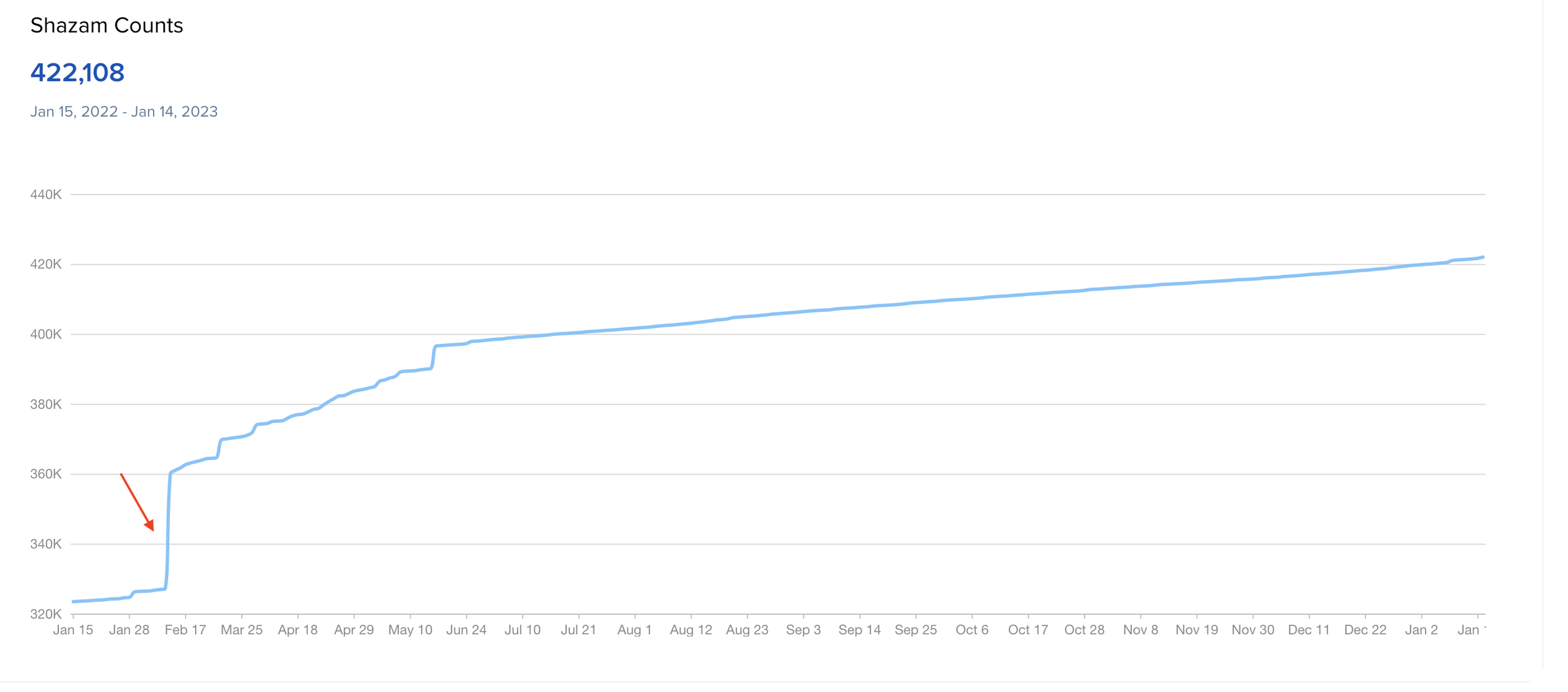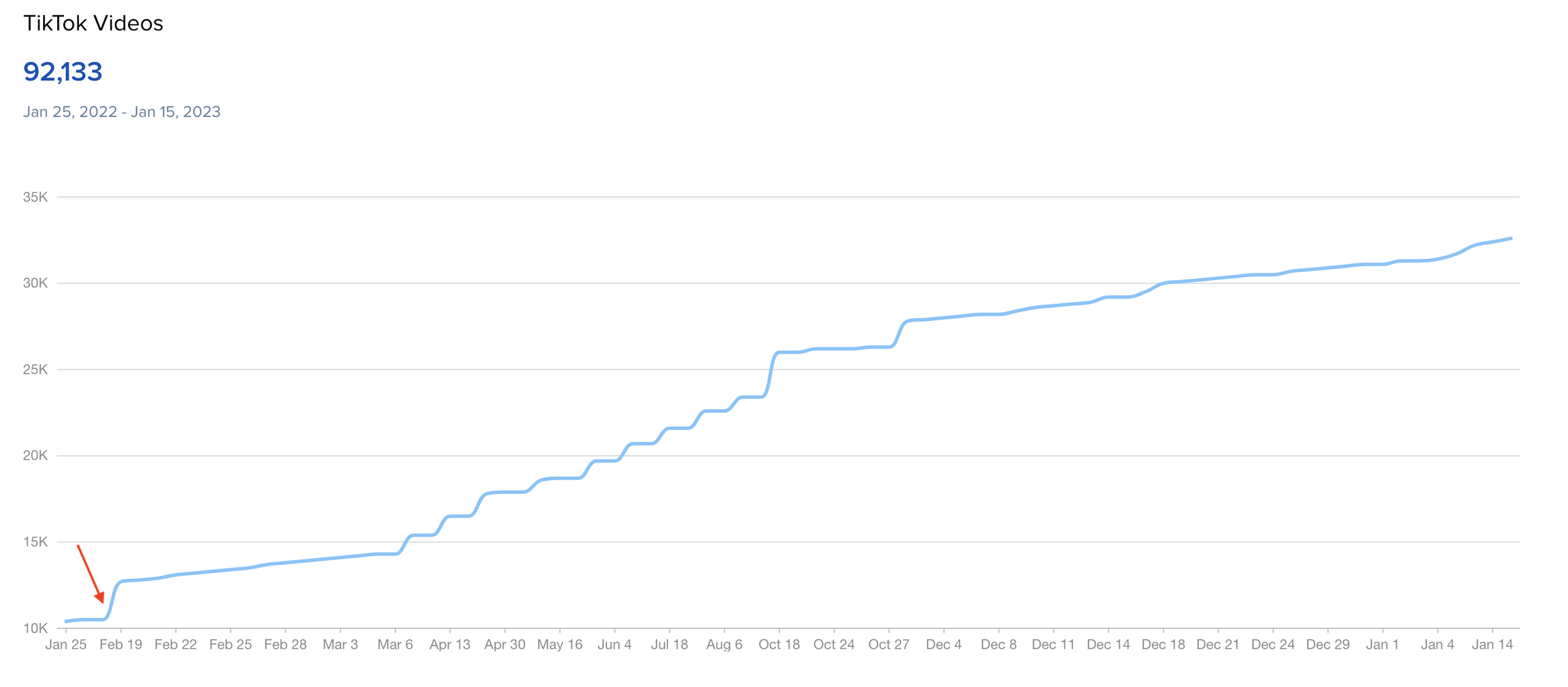New Ads, Old Music: Why Super Bowl Ads License Classic Songs Over New Releases
When the Super Bowl airs on Feb. 12, chances are you’re going to hear a whole lot of familiar music included in the must-watch ads.
According to a review of the most-liked 2022 Super Bowl ads that included licensed music by Songtradr, 85% featured songs released years — even decades — ago. What’s more, an additional post-game analysis shows that all had the most notable upticks in on-demand streams and Shazam track ID activity following the game.
For instance, Electric Light Orchestra’s “Showdown,” first released in 1973, was featured in a Michelob Ultra spot. The track had a 10% increase in Shazams in the week around the Super Bowl, the biggest jump the song saw in the last year.
(via Songtradr)
The No. 3 gameday spot by TV ad impressions (according to iSpot) was Crypto.com’s “Make History” featuring LeBron James, with Dr. Dre’s “The Next Episode” (released in 2000) playing in the background. The ad aired during halftime, and the song was the opening track of the corresponding halftime show. As a result, Songtradr tracked a notable bump in Spotify streams, YouTube views, Shazams and TikTok videos for the song after the game.
(via Songtradr)
(via Songtradr)
(via Songtradr)
So what does this mean for brands debating how (or even whether) to include music in their advertising? The answers reverb well past the vanity stats into very real brand strategies going forward.
The Songtradr analysis showed that older music (called “catalog tracks” in the music biz) not only had a large spike in streams/Shazams, but those spikes were also far higher than the corresponding spikes in ads that featured new music.
That suggests the uptick streams/Shazams for the catalog music was a direct result of their inclusion in the ad. And that has big implications for the brand using it. After all, any replaying of the song used is more than just playing a good song… it’s reminding listeners of the ad that either introduced or re-introduced them to it in the first place (whether they realize it or not).
That’s called brand recall, and it’s free. The same thing happens with music in popular TV shows. For instance, every time you heard Kate Bush’s “Running Up That Hill” or Metallica’s “Master of Puppets” last summer you likely also thought of Stranger Things since that was the show that resurfaced both tracks.
For that to work, though, the track has to have a recognizable and even nostalgic element. Yes, new music is hot, and gets a lot of radio play and Spotify streams. But new music is also, well… new. Meaning fewer people have heard it. That makes it less recognizable.
During a mass market event like the Super Bowl, where you’re paying $12 million a minute to reach the widest audience of any TV ad opportunity of the year, you want to include music that has the same potential for mass-market reach and appeal.
Remember your goal here is not to be the indie record store music expert introducing customers to the obscure B-side. You’re here for mass engagement.
Used correctly, a classic song in a TV commercial can be just as effective as a celebrity endorsement, where the “star” is the song.





